There's Plastic in My Plaque!
First report of micro/nano plastics in patients with atheroma and their link to worse clinical outcomes (composite of all-cause death, heart attack and stroke)
“The finding of microplastics and nanoplastics in [atherosclerotic] plaque tissue is itself a breakthrough discovery that raises a series of urgent questions.”—Philip Landrigan
This is not like a fly in my soup. It’s serious. It’s about a major wake up call from a prospective study in today’s New England Journal of Medicine. Among 257 patients undergoing a surgical carotid endarterectomy procedure (taking out the atherosclerotic plaque) with complete follow-up, 58% had microplastics and nanoplastics (MNPs) in their plaque and their presence was linked to a subsequent 4.5 -fold increase of the composite of all-cause mortality, heart attack and stroke.
Background
Plastics are everywhere, with an annual output over 400 million tons, expected to double by 2040, produced from fossil fuels with thousands of chemical additives that are known to be carcinogenic, neurotoxic, and disruptive of our lipid metabolism (“endocrine disrupting”). As a result of our ingestion and inhalation, they have been found in the tissue of people—in the gastrointestinal tract (colon, liver), lymph nodes and spleen, lung, placenta, and more as illustrated, along with their toxic effects, in a recent review.
Microplastics and nanoplastics (MNPs), the product of their degradation, have been linked with asthma, cancer, cognitive impairment, interstitial lung disease, and premature births. MNPs have been found in drinking and bottled water and bound to fine particulate matter (PM2.5) in air. The CDC data indicate they are likely present in the bodies of all Americans.
An outstanding review article, also present in the current NEJM issue, goes through the known health effects of the plastic life cycle with the accompanying Figure.
The New Study
A 3-center prospective study in Italy was conducted to determine whether MNPs were present in atheroma and, if so, were there adverse cardiovascular outcomes associated with MNPs in plaque? They selected a primary composite endpoint of all-cause death, heart attack and stroke.
Of 304 patients enrolled, 257 completed follow-up that extended nearly 3 years. The baseline features of participants with or without MNPs in their plaque appeared to be balanced for age, sex, risk factors for atherosclerosis, lipids, and medications.
Polyethylene was present in 58% of the patients; polyvinyl chloride in 12% Nine other types of plastic polymer MNP constituents were assayed but not detected.
The findings were consistent in the 3 centers that participated in the study. Blue indicate patients with MNPs in plaque, Orange without.
Here’s the direct visualization via electron microscopy that shows the MNPs inside macrophages (upper, left) and in the debris of the plaque (upper, right). The arrows point to the non-organic material with irregular, jagged shape. In the bottom panel the arrows point to the MNPs (lower, left) and their reflective quality seen in the red boxes (lower, right). Spectral X-ray maps demonstrated the MNPs induced chlorine in 4 of 10 patients tested. The MNPs detected were below the 200-nm threshold, but it is not possible to conclude whether they entered the body via ingestion or inhalation or both.
The MNPs elicited a marked increase in inflammatory response in the plaque which included increased levels of TNF-alpha, Interleukin-6, Interleukin-18, interleukin 1-beta, CD3 and CD68. Further, there was markedly lower collagen content in the plaques from patients with MNPs, which likely reflects pro-inflammatory impact and collagen breakdown.
The MNPs and the pro-inflammatory response were linked with a 4.5-fold increase in major events during 34 month follow-up (see Figure at the top of the post), which held up to regression analysis and consideration of confounders.The presence of diabetes at baseline (30% in people without MNPs, 24% in people with MNPs) was associated with a 4.8-fold risk of the primary endpoint but no other features were significantly associated with the primary endpoint.
Commentary
The new study presents 2 firsts: the presence of MNPs in human atheromatous plaques and their association with major adverse cardiovascular outcomes. The number of patients is relatively small, as are their events during follow-up. While there is the possibility that MNPs found were contaminants, and that it is impossible to rule out any confounding effects, the careful methodology with mass spect, electron microscopy, strong evidence of pro-inflammatory markers in plaques with MNPs, the representativeness of the patients, and the consistency across the 3 centers in this prospective assessment are all noteworthy.
It is a deeply concerning report that will (of course) require independent replication. The massive, unchecked buildup of plastics with overwhelming evidence of our ingestion and inhalation, with systemic distribution within our bodies through blood circulation, should provoke major efforts to get ahead of this plastic-demic.
Since 40% of plastics come from disposable single-use items (like plastic water bottles), it’s high time something be done to specifically address this their pervasive, promiscuous use, ideally banning them. In the new review paper, many strategies to reduce toxic exposure at the individual and policy levels are presented, including what we eat, and how we clean. As Landrigan pointed out in the accompanying editorial “the plastic crisis has grown insidiously while all eyes have focused on climate change.” The big picture of definitively transitioning away from fossil fuels and effectively addressing climate change cannot be emphasized enough.
The new study takes the worry about micronanoplastics to a new level—getting into our arteries and exacerbating the process of atherosclerosis, the leading global killer— and demands urgent attention.
Thanks for reading Ground Truths.
Please share this piece to help awareness of the MNP problem.

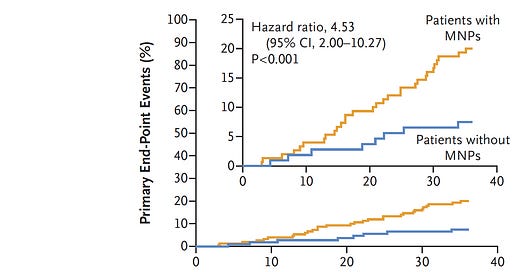


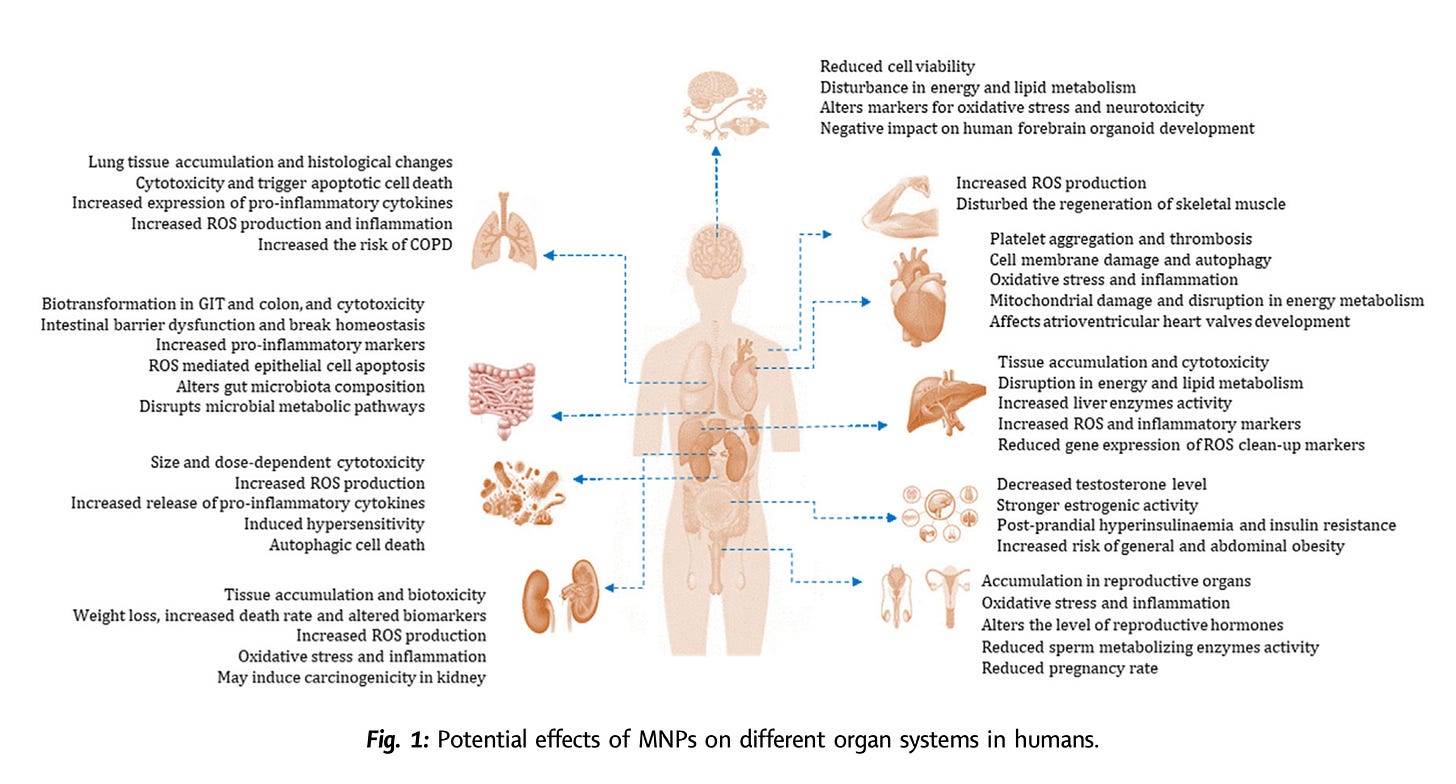
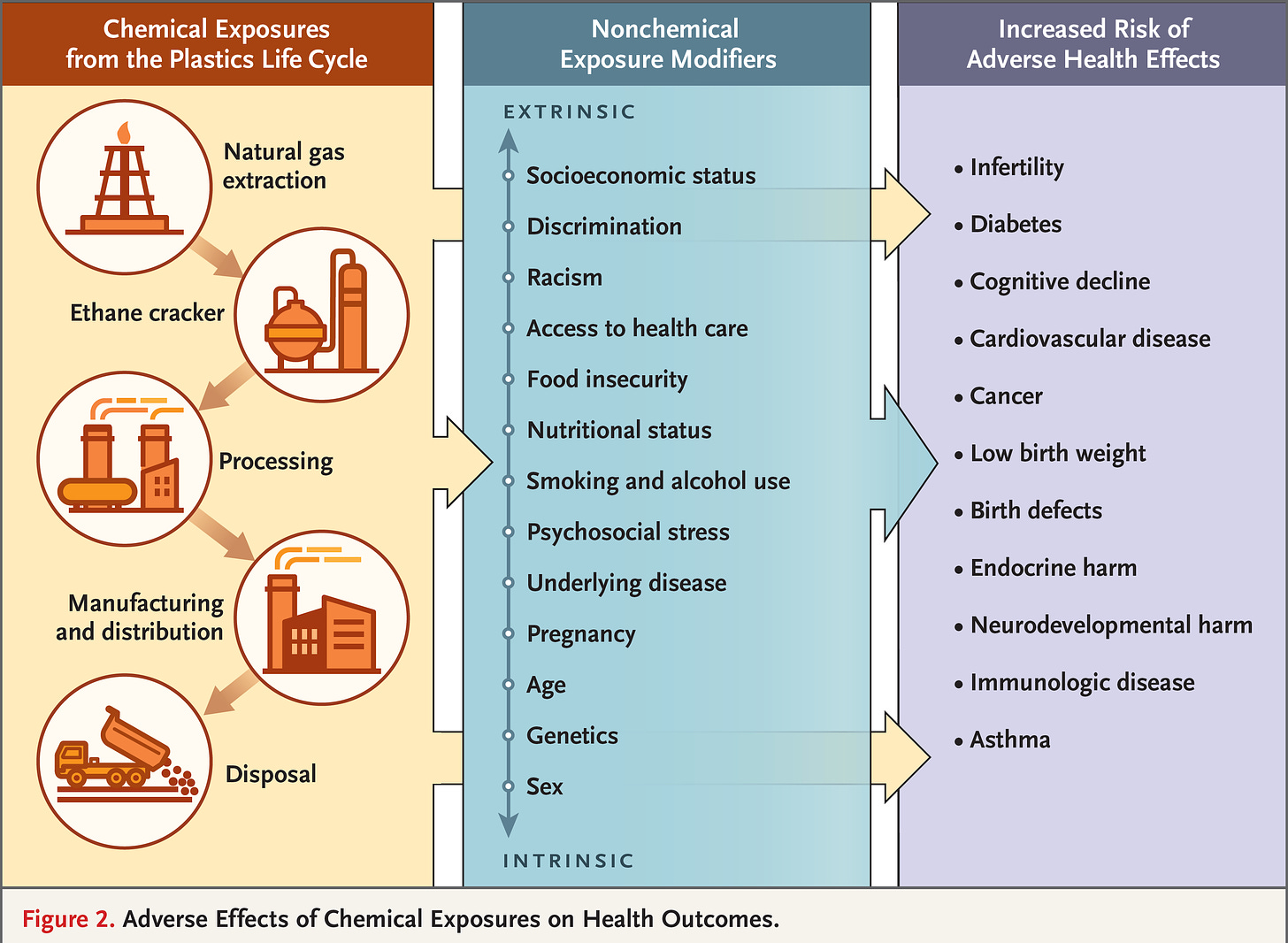
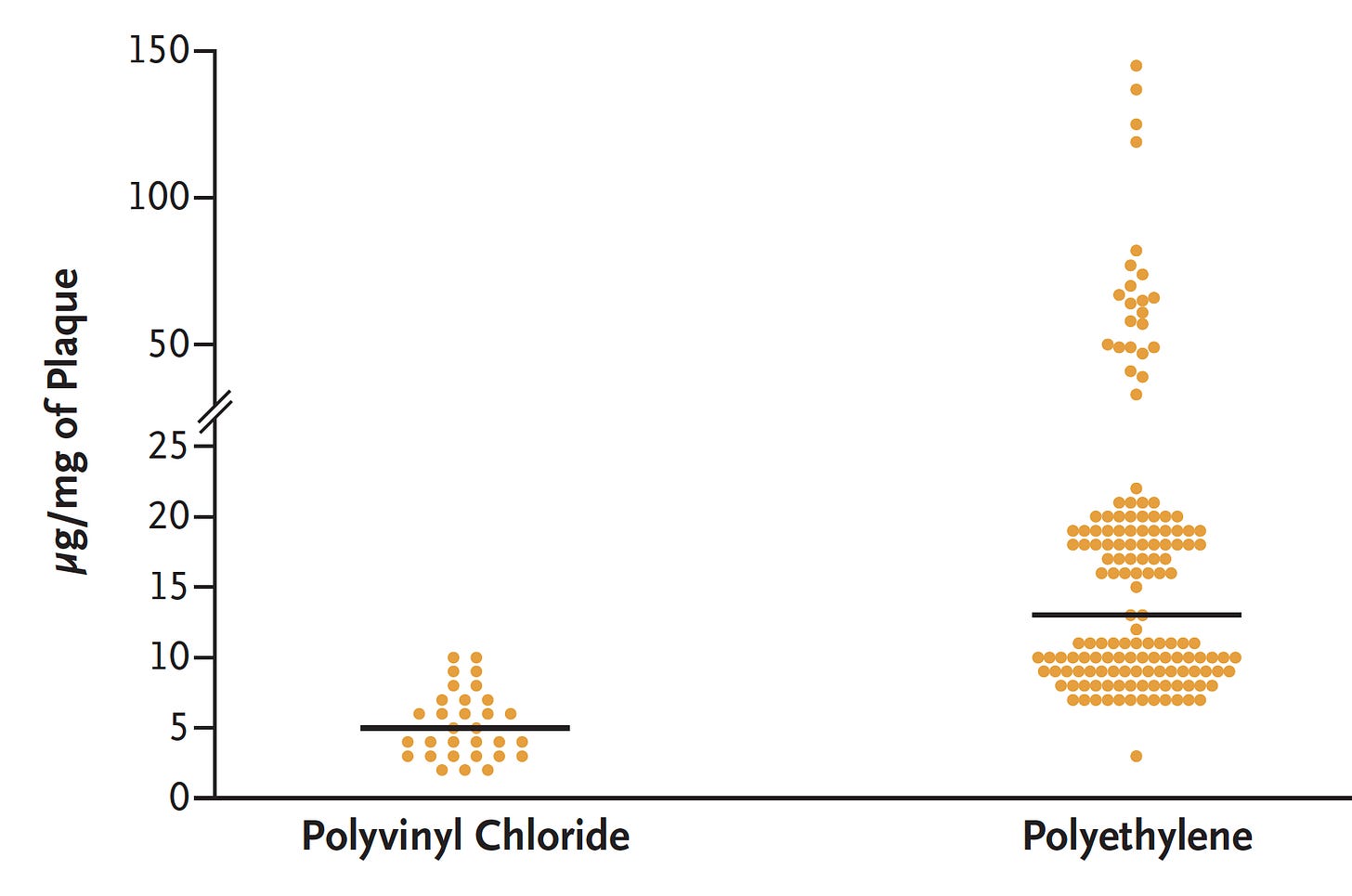
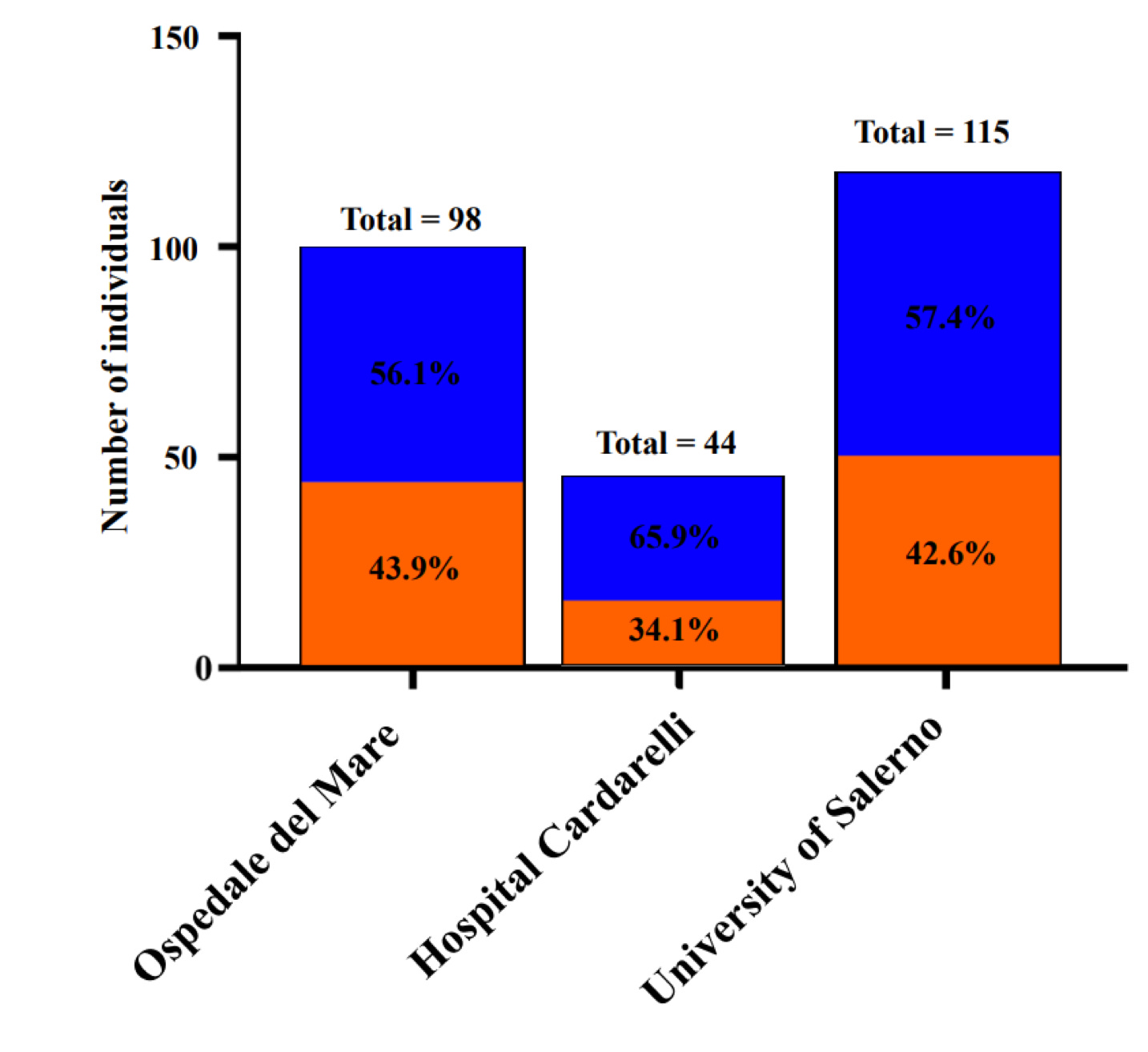

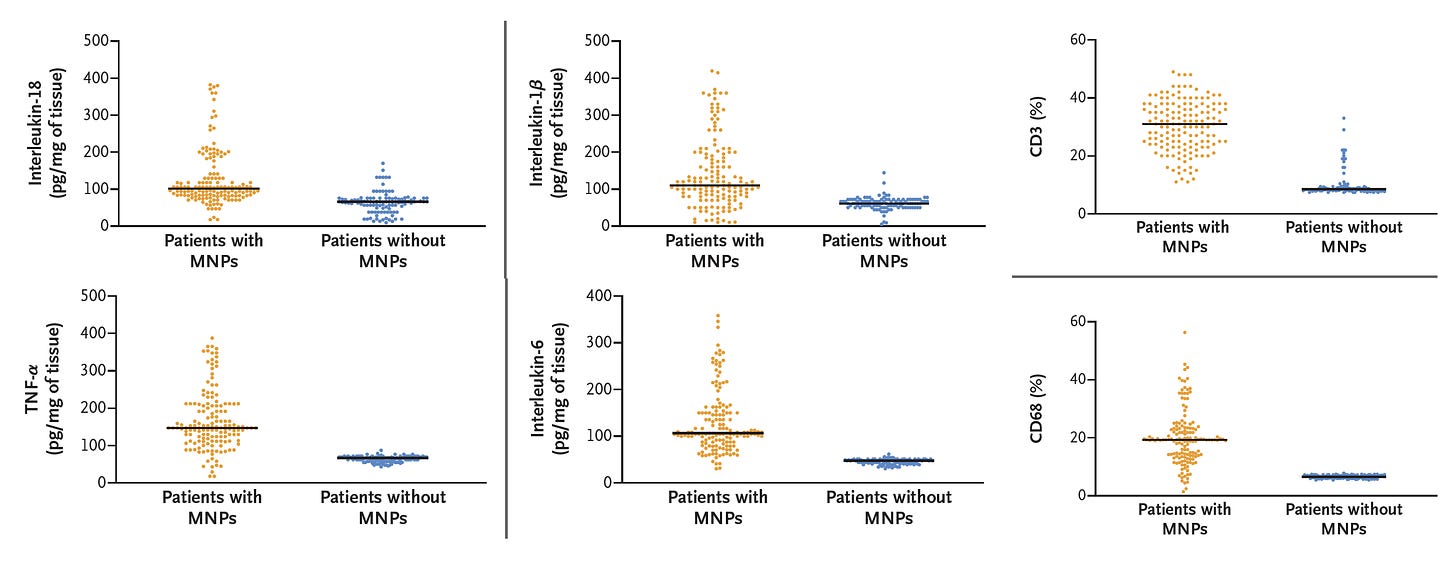

Wow this is staggering, but sounds right intuitively. I did a post on the Rutgers study recently finding way more nanoplastics than previously thought in bottled water. I agree that reducing bottled water use would be a low hanging, highly impactful, and environmentally sound priority for individuals and policy leaders.
In the meantime I use a countertop reverse osmosis filter for drinking water which theoretically “is designed to reduce impurities from the water down to 1/10,000 of a micron. That’s ten times smaller than a nanoparticle if my math is correct.” While RO membranes might introduce some nanoplastics in the end filtration product, I doubt this approaches the amount seen in the Rutgers study of typical bottled water people drink.
A complementary deep dive if desired:
https://mccormickmd.substack.com/p/surprising-levels-of-microplastics
And vote, vote, vote… and make our environment and planet the most important consideration among many others which stir up misplaced passion.
Thank you for posting, Eric. I'll have to read the paper when I have more time, but this is frightening. Unfortunately, my confidence that anything will be done to mitigate the problem globally is low, so it will be helpful to know if there's anything individuals can do.